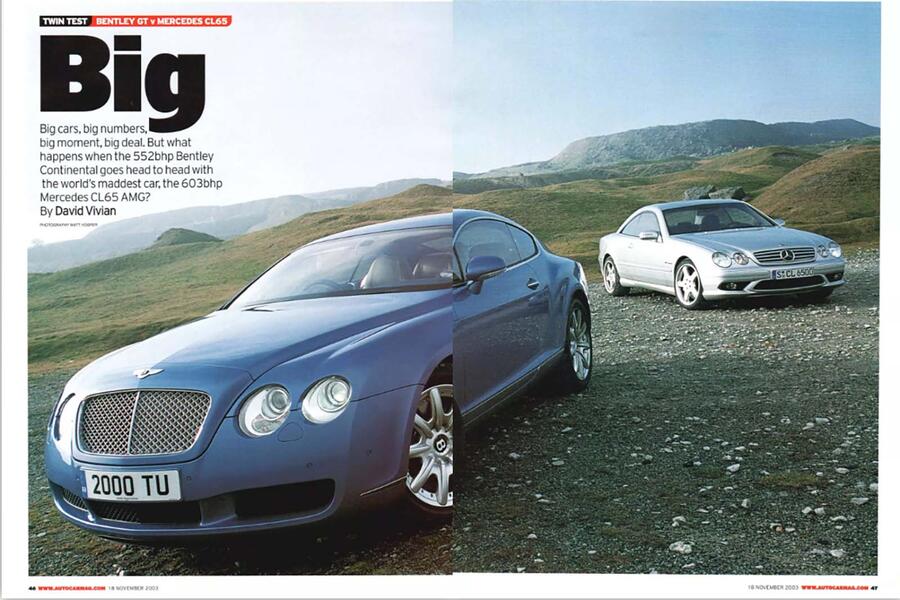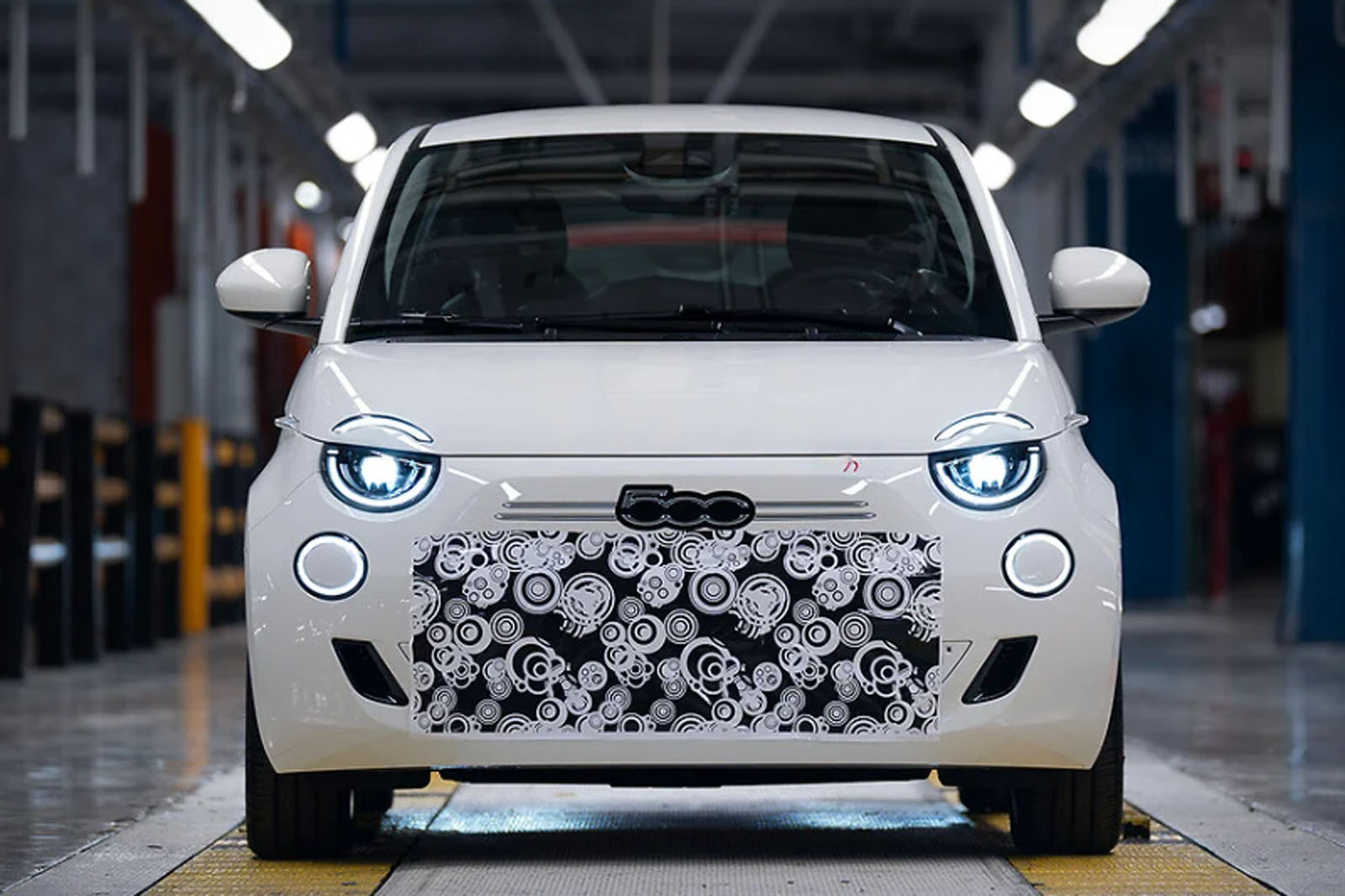Pagani power for peanuts - why now is the Mercedes CL65's time
Merc's epic coupe is still good competition for a Continental GT now - and just as cheap An autumn day in 2003. The job was a good one: compare a Bentley Continental GT with a Mercedes-Benz CL65 AMG. I must confess I went into it carrying something no road tester should: prejudice. Not nationalistic prejudice, or brand prejudice - more a suspicion that this rakish new Bentley, with its W12, all-wheel drive, and beautiful cabin, would be the better car. The Merc, I thought, would be just another blinged-up AMG sledgehammer. The torque figure should have given me pause. 738lb ft is a lot. Enough, in fact, that the Bentley was comfortably outgunned in a straight line. Still, I suspected it would be the more satisfying, more rounded car. The CL65, after all, was painted in Dubai-spec off-white and wore more chrome than a Lincoln Town Car. Its cabin looked like a Mercedes C-Class trimmed in walnut and switchgear. I took the Bentley out first. Its key fob was an intricate thing, all knurled chrome and deep enamel. I headed for what Autocar once called the “ride road,” a narrow lane near Chobham test track with lots of crests, camber, and broken surfaces. It used to be a brutal test of suspension finesse, until the council resurfaced it. Still, the Bentley’s plush ride revealed its limits on this road. The GT did well, considering its mass, but the short, sharp stuff caught it out. The cabin creaked. The seats squeaked. The leather made that curious rubbing noise you get in Jaguars and old Jermyn Street shoe shops. The Bentley felt indomitable, not least because it put its power down cleanly. And the cabin really was a wonderful place to be. But it still drove too much like a posh Phaeton. Later GTs would improve the formula dramatically. But on that day, it was the Mercedes that impressed. The ride quality was the first surprise. Thanks to its clever ABC hydraulic suspension and four square Michelins, the CL65 soaked up the surface like a Mercedes S-Class. Then, in the next moment, it would turn in like a hot hatch. It was a riot. You could pull the ESP back, roast the tyres, or just use that astonishing torque to lean on the rear axle and power out of corners like a massive, automatic Caterham. It was faster than the Bentley and more fun. It won the test. It was also more spacious in the back and scored bonus points for having a boot. The interior was still a bit C-Class, but somehow that mattered less now. I wasn’t the only one who loved it. A friend of mine worked at Mercedes at the time. He convinced his boss to enter a CL65 demonstrator in the Brighton Speed Trials. It monstered a Ferrari F40, clocking 12.57s to the Ferrari’s 12.88s. All he had to do was press the brake, floor the throttle, wait for the torque converter to stall, then release. The V12 bellowed and the gearbox cracked through its ratios like a switchblade. The commentator, used to Allards and backyard specials, couldn’t quite believe it. “Ladies and gentlemen,” he announced, “this is a completely stock car.” The CL65 was quick in other ways too. Quick to drink if you kept your foot down. Quick to destroy its rear Michelins if you got cheeky with the ESP. And quick to shed value. At one point, its £142,000 list price had collapsed to less than £12k. Values have since stabilised. And recently, they’ve started to climb. Finding one is tricky. Even knowing it exists is tricky. The CL65 of this era—the W215—ran from 1999 to 2006. It’s the one with the sloping D-pillar and triangular rear lights. Mercedes rarely published production numbers, but estimates vary from 200 to 800 cars. Either way, it’s rare. Don’t confuse it with the CL63 AMG, which is even rarer, but also much slower. It’s a car people just don’t know about. Which is probably why it’s still cheap. Tempted? Just make sure you check for rust - this was not Mercedes’s finest hour for rustproofing. And don’t expect bills to be small. But what a car.
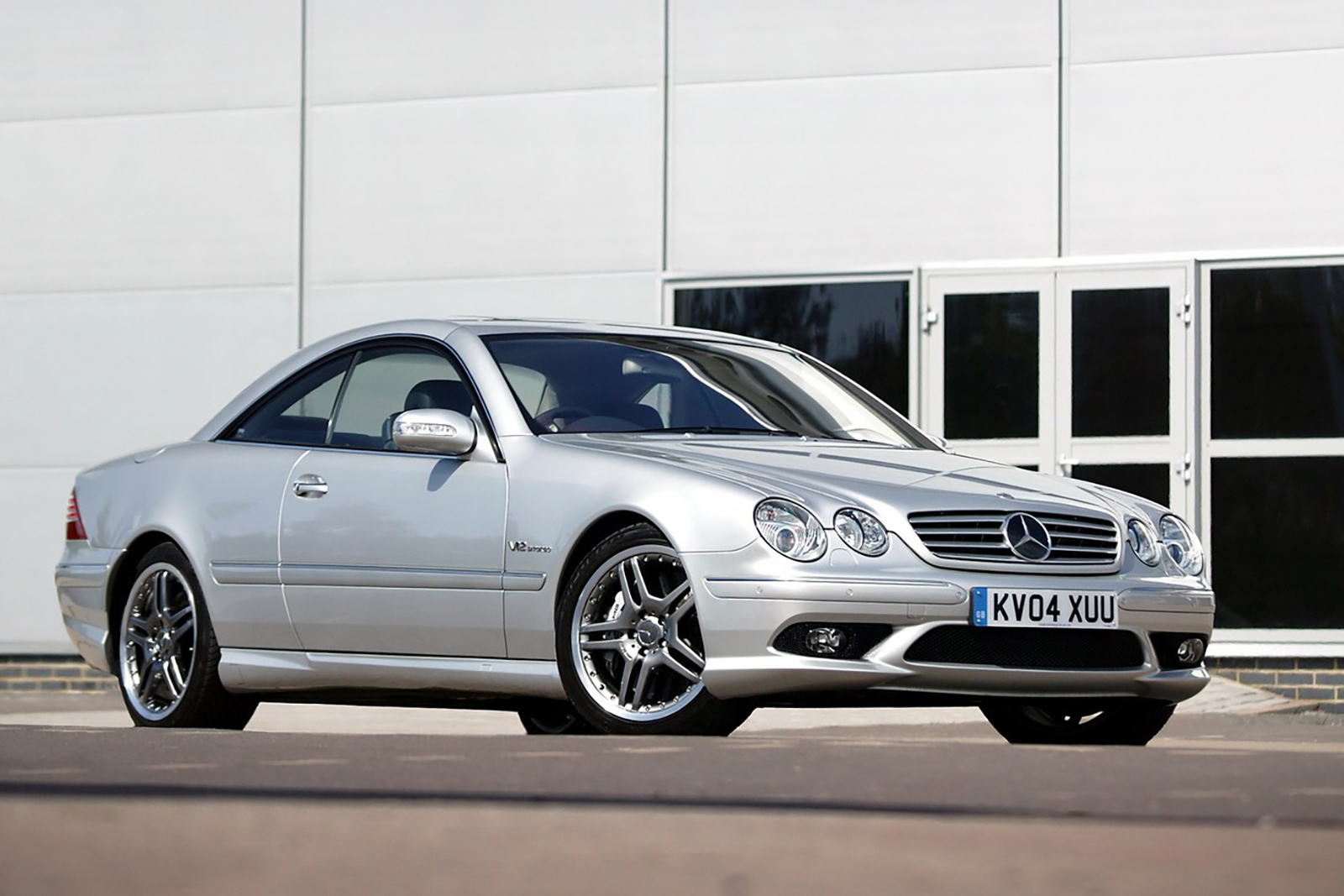
 Merc's epic coupe is still good competition for a Continental GT now - and just as cheap
Merc's epic coupe is still good competition for a Continental GT now - and just as cheap
An autumn day in 2003. The job was a good one: compare a Bentley Continental GT with a Mercedes-Benz CL65 AMG.
I must confess I went into it carrying something no road tester should: prejudice. Not nationalistic prejudice, or brand prejudice - more a suspicion that this rakish new Bentley, with its W12, all-wheel drive, and beautiful cabin, would be the better car. The Merc, I thought, would be just another blinged-up AMG sledgehammer.
The torque figure should have given me pause. 738lb ft is a lot. Enough, in fact, that the Bentley was comfortably outgunned in a straight line. Still, I suspected it would be the more satisfying, more rounded car. The CL65, after all, was painted in Dubai-spec off-white and wore more chrome than a Lincoln Town Car. Its cabin looked like a Mercedes C-Class trimmed in walnut and switchgear.
I took the Bentley out first. Its key fob was an intricate thing, all knurled chrome and deep enamel. I headed for what Autocar once called the “ride road,” a narrow lane near Chobham test track with lots of crests, camber, and broken surfaces. It used to be a brutal test of suspension finesse, until the council resurfaced it. Still, the Bentley’s plush ride revealed its limits on this road. The GT did well, considering its mass, but the short, sharp stuff caught it out. The cabin creaked. The seats squeaked. The leather made that curious rubbing noise you get in Jaguars and old Jermyn Street shoe shops.
The Bentley felt indomitable, not least because it put its power down cleanly. And the cabin really was a wonderful place to be. But it still drove too much like a posh Phaeton. Later GTs would improve the formula dramatically. But on that day, it was the Mercedes that impressed.
The ride quality was the first surprise. Thanks to its clever ABC hydraulic suspension and four square Michelins, the CL65 soaked up the surface like a Mercedes S-Class. Then, in the next moment, it would turn in like a hot hatch. It was a riot. You could pull the ESP back, roast the tyres, or just use that astonishing torque to lean on the rear axle and power out of corners like a massive, automatic Caterham. It was faster than the Bentley and more fun. It won the test.
It was also more spacious in the back and scored bonus points for having a boot. The interior was still a bit C-Class, but somehow that mattered less now.
I wasn’t the only one who loved it. A friend of mine worked at Mercedes at the time. He convinced his boss to enter a CL65 demonstrator in the Brighton Speed Trials. It monstered a Ferrari F40, clocking 12.57s to the Ferrari’s 12.88s. All he had to do was press the brake, floor the throttle, wait for the torque converter to stall, then release. The V12 bellowed and the gearbox cracked through its ratios like a switchblade. The commentator, used to Allards and backyard specials, couldn’t quite believe it. “Ladies and gentlemen,” he announced, “this is a completely stock car.”
The CL65 was quick in other ways too. Quick to drink if you kept your foot down. Quick to destroy its rear Michelins if you got cheeky with the ESP. And quick to shed value. At one point, its £142,000 list price had collapsed to less than £12k. Values have since stabilised. And recently, they’ve started to climb.
Finding one is tricky. Even knowing it exists is tricky. The CL65 of this era—the W215—ran from 1999 to 2006. It’s the one with the sloping D-pillar and triangular rear lights. Mercedes rarely published production numbers, but estimates vary from 200 to 800 cars. Either way, it’s rare. Don’t confuse it with the CL63 AMG, which is even rarer, but also much slower.
It’s a car people just don’t know about. Which is probably why it’s still cheap. Tempted? Just make sure you check for rust - this was not Mercedes’s finest hour for rustproofing. And don’t expect bills to be small. But what a car.










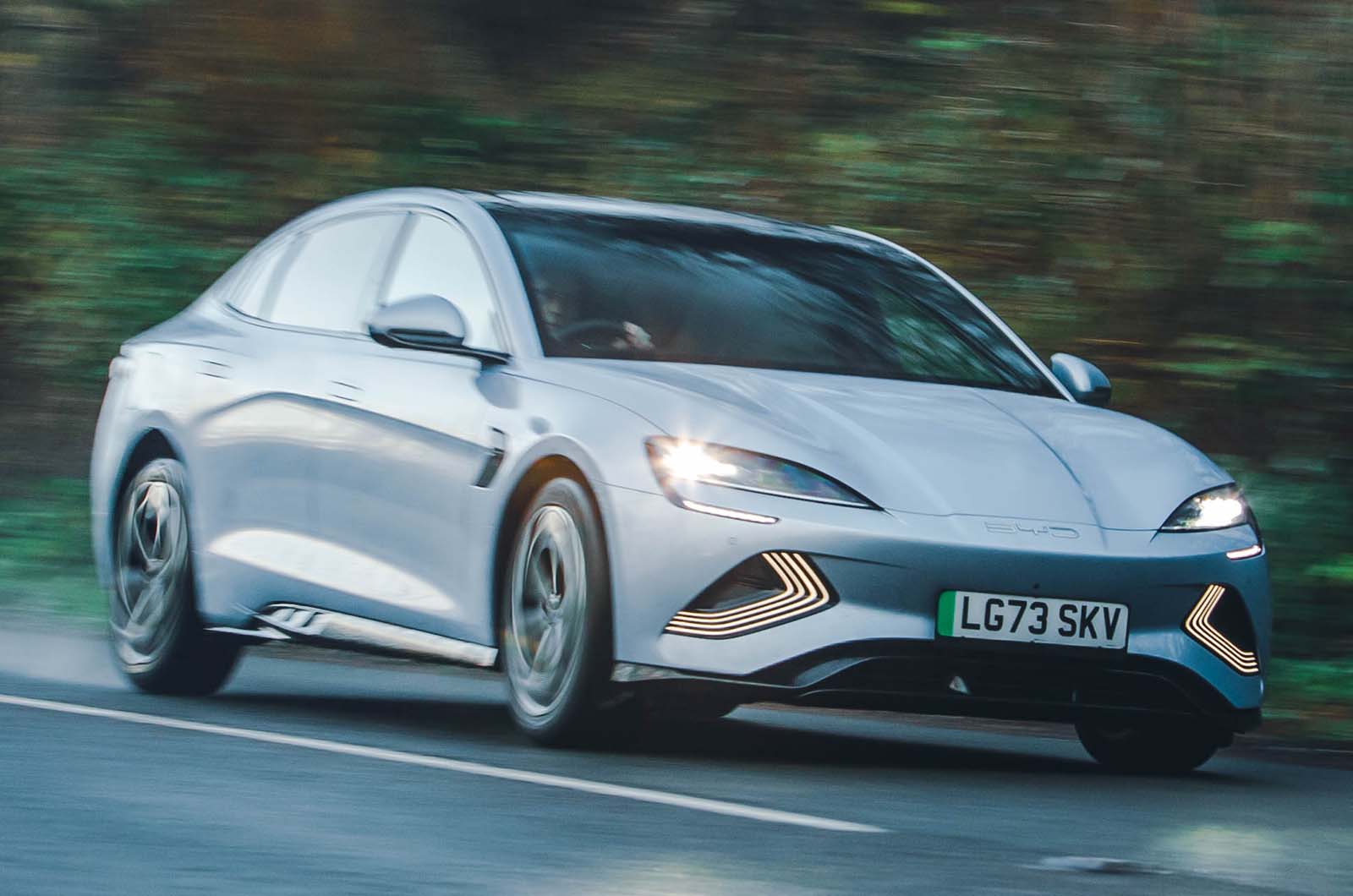
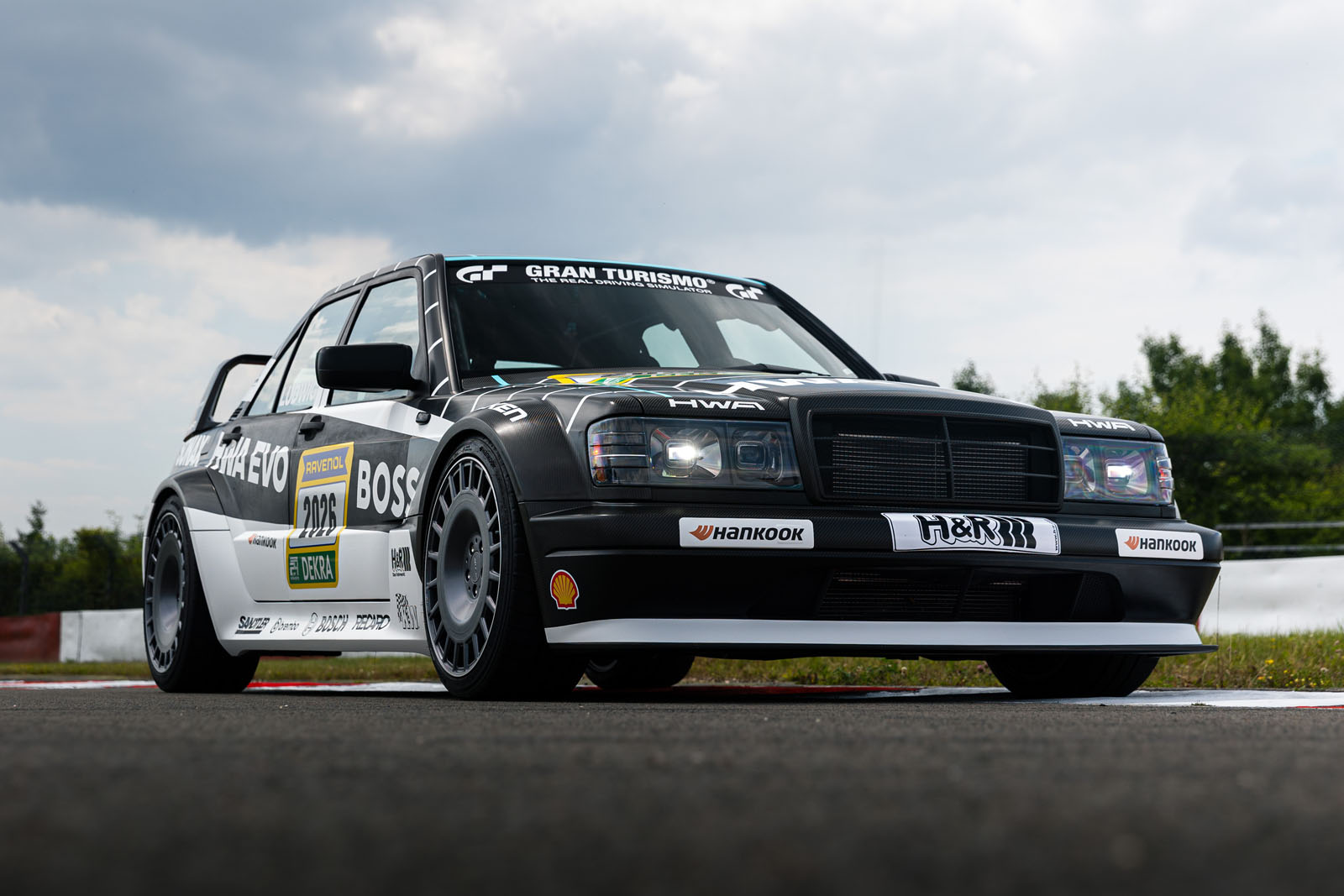









































































![Four big takeaways to wrap up the Paris Air Show [Video]](https://breakingdefense.com/wp-content/uploads/sites/3/2023/06/FCAS-scaled-e1685718848105.jpg?#)
![The sights of Paris Air Show, one last time: Day 4 [Photos]](https://breakingdefense.com/wp-content/uploads/sites/3/2025/06/20250617-helenedelacoste-Paris-Air-Show-037-scaled-e1750357690820.jpg?#)



















































